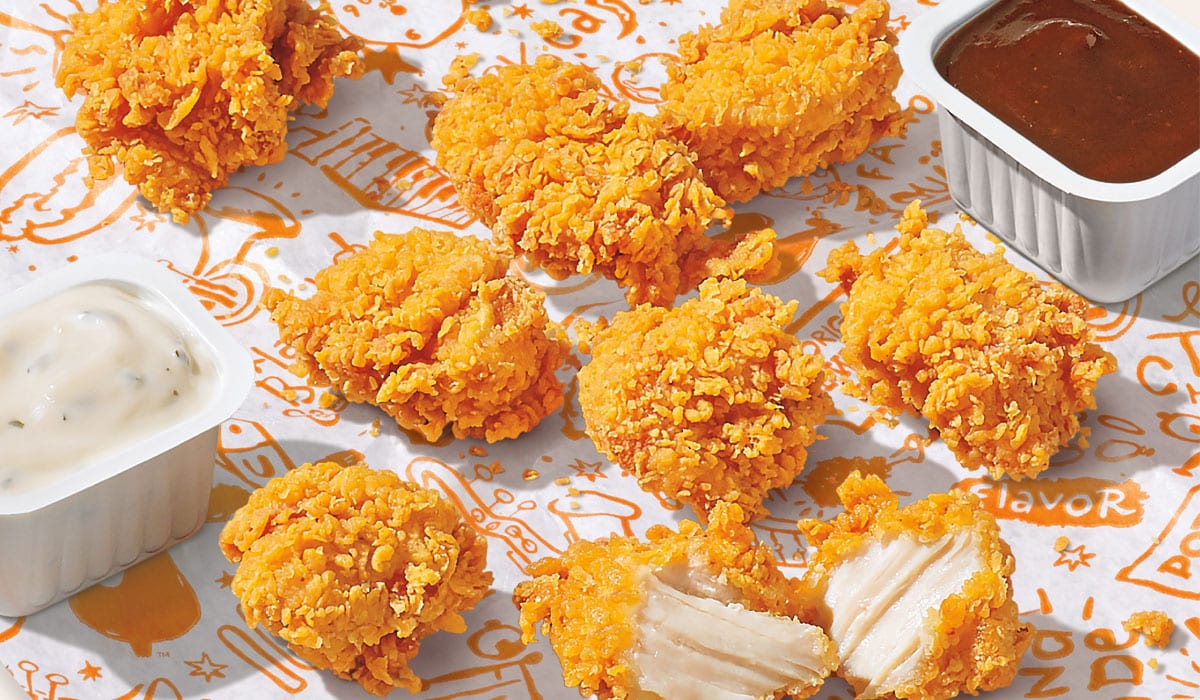Leaders of today’s top and emerging quick-service restaurants understand the value of building social purpose into their brand DNA. Eighty-seven percent of millennials and 94 percent of Gen Z expect companies to address pressing social and environmental issues and 90 percent of consumers are more likely to trust and be loyal to socially responsible businesses. It is clear in today’s landscape that operating without clear, authentic purpose is simply not good for business.
Rocket Social Impact has supported purpose-driven strategies for brands like the Dunkin’ Joy in Childhood Foundation, Focus Brands, Papa Johns and The Popeye’s Foundation. We work with companies to highlight how a commitment to helping others can make a difference to a brand’s bottom line. Here’s why social purpose matters and how some brands are leveraging impact to drive marketplace differentiation.
The Country’s Fastest Growing Quick-Serves include Social Purpose
Perhaps it is no coincidence that the top 11 fastest growing quick-serves and the hottest fast casuals have robust social purpose efforts. From an iconic leading brand like Starbucks to a quickly emerging one like Boba Guys, leading companies are deliberately incorporating social purpose. Despite their diverse product offerings, they all have one thing in common: their intentionality around uniting business, communities, and the planet for the greater good.
There’s a Laser-Focus on Sustainable, Equitable Food Systems
Many brands are solving for their own Environmental, Social & Governance (ESG) goals—from zero waste, to fair trade practices, brands are seeking to leave a resource-positive mark on the environment. There is a growing focus on creating sustainable, equitable food systems that enhance communities their products are sourced from. The focus is on creating true relationships and developmental opportunities for their farmers, meat, and dairy suppliers while also delivering food with quality and integrity to consumers. For example, at Sweetgreen, 100 percent of stores have compost services and pickup; with that, the company diverts 60 percent of waste from landfills and composts 75 percent of food scraps.
Social Purpose Starts with Employees
As 2021 marked the Great Resignation and a broader push for diversity and inclusion efforts, the challenging labor market continues to force quick-serves to look inward on how they take care of their own. As companies look for innovative solutions on how to increase value, morale and loyalty through holistic employee programs, companies are inviting employees into their broader purpose-driven work. Quick-service brands are putting a stake in the ground and empowering their front-line staff by providing opportunities for greater growth. The fact is a decent portion of restaurant-level employees match the underserved socio-economic backgrounds of their companies’ supported nonprofits. We are seeing brands prioritize internal employee success and well-being, while also supporting their community efforts. For example, The Popeyes Foundation has a Family Fund that assists with immediate needs of employees or their family members who may be victims of disasters or other emergency situations. Since 2017, the Popeye’s Foundation has provided more than $200,000 in grants to more than 80 team members.
Franchise Accelerator Programs are the New Thing
As brands consider their social purpose, it is evident that they are committed to access and upward mobility of their employees and the communities in which they serve. Whether it be in strong partnership with a global organization or a university program, brands have recently launched, or increased access and awareness of their Franchise Accelerator Programs. These platforms have become a game changer—offering career development opportunities for incoming workforce (graduates) and internal employees that they may not have the opportunity to reach otherwise.
Mobile is a Vehicle to Invite Consumers to Make an Impact
Mobile has become the optimal vehicle for brands to reach consumers where they are. As screen time continues to rapidly grow, social purpose efforts have become integrated in brands’ mobile apps. From employee volunteerism stories, to engaging consumers via fundraising efforts, to giving customers a voice on grants in their communities, consumers want to be invited to engage in the purpose efforts—and are more inclined to do so when brands meet them where they are … which is often on their phones.
Restaurants Showcase Social Purpose Commitments Via Packaging
Whether it be cause marketing partnerships or highlighting zero waste commitments, quick-service brands are leaning into their packaging to highlight their social purpose values and initiatives. Lately, there has been a greater appetite to leverage the prime real estate of packaging for social purpose commitments, cause partners, and key campaign initiatives. Companies across the board are using this asset to achieve their social purpose goals—packaging is used as a vehicle to increase sustainability & consumer awareness. The opportunities for reaching consumers, storytelling capabilities, and highlighting social impact efforts through this important asset are endless.
Keeping a Focus on Hyper-Local Community Impact
Companies are focusing on their local roots by supporting their hometown through working with franchise owners to partner with neighborhood organizations that matter most to their local teams.
The Rise of Plant-Based Food
From Burger King to Taco Bell to KFC and more, all the big players are developing plant-based products as key menu items. Due to high consumer demand and companies’ commitments to ESG, plant-based food is at the forefront of quick service. Specifically, in 2022, 56 percent of consumers are eating more plant-based food due to healthier dietary needs as well as their desire to play a role in climate change—and restaurants are responding quickly.
Rich Maiore is the president of Rocket Social Impact For more information and examples of this work in action, you can also check out the full report.













